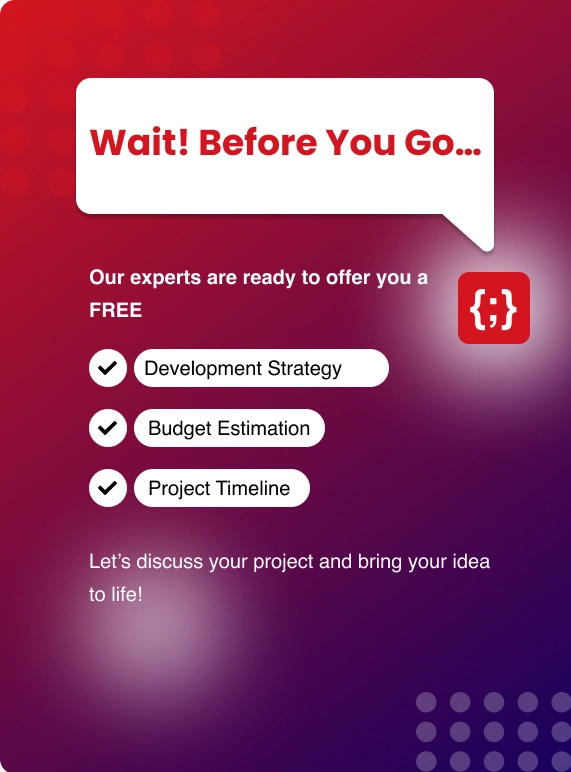If you make your customers fall in love with your product, then the "sky is the limit" for your business.
You require a comprehensive enhanced strategy that helps your e-commerce business eclipse the competition and make your product noticeable in front of your target audience.
Developing a product without a product strategy is akin to navigating without having a map. While there's a chance you'll succeed, the odds aren't in your favor to a great extent.
This is why product strategies are crucial for a successful business. Instead of relying exclusively on your instinct when it comes to product development, you can follow a concrete roadmap that helps you reach the right direction.
The world has been following the digital footprints, making it essential to leverage the current marketplace tactics to thrive in your business.
Learn how to harness the digital transformational power with this comprehensive guide to eCommerce product development strategy.
What Is Product Strategy?
It is a process of identifying what you desire to attain and your plan to reach that place. In other words, it defines the "why of the product, and it must come before the "what," "when," and "how."
WHY IS A PRODUCT STRATEGY BENEFICIAL FOR A BUSINESS?
Product development strategy is crucial for any business as it provides the following advantages
1. ABSOLUTE CLARITY
ecommerce product development strategy helps you craft and convey a clear and well-thought-out plan for your business so that your team will be in a better position to deliver their best work. Furthermore, your customer success team will gain a better understanding of your product's use cases and will be able to handle your users' issues effectively.
2. PRIORITIZE A PRODUCT ROADMAP
When a team has a clear and full-fledged strategy, it is easy for a team to execute. But a product development strategy needs to be prioritized so that the team hasn't get entangled in the wrong tasks and not leverage the best use of resources and time.3. IMPROVED TEAM'S TACTICAL DECISION
When your team has a clear product strategy, they will use it as a reference point, and all the things revolve around it. Hence, a strategic decision will be made keeping the reference point in mind, align the team in one direction, and helps in improved decision-making.
Elements of Product Development Strategy.
To make your product development process successful, you need to look at the three product strategy components
1. FOUNDATION-WHAT YOU DESIRE TO ACHIEVE
Build a proper product roadmap that aligns with your vision, business models, and positioning. In other words, define the problems that your product will solve for a targeted customer segment.
2. MARKET- UNDERSTAND YOUR CUSTOMERS & MARKET RESEARCH
To create a product that your customers would enjoy, you must first understand what they require regarding their likes and dislikes, challenges, and professional aspirations. A perfect product development strategy incorporates exact buyers' personas and detailed research competitor's analysis to understand the market landscape better.
3. IMPLEMENTATION- HOW TO EXECUTE IT
Once your e-commerce product development foundational layout is done, it's time to tackle and implement the essential tasks which bring rewarding results. It includes time-bound, measurable objectives, goals, and initiatives.
Types of Product Strategy that you should Know
1. COST STRATEGY
A cost strategy aims to create the best product for the least amount of money. It evaluates the available resources and identifies where money can be saved during manufacturing.
It is a beneficial product development strategy for low-effort purchases such as household cleaning items which is an essential home utility, and customers often don't look for loyalty for any particular brand.
2. DIFFERENTIATION STRATEGY
When it comes to differentiating your product, price isn't the foremost criterion. There are several profound ways to make it stand out in your business. Perhaps it's a high-end item made of the finest materials, or it could have revolutionary features that completely transform the space. This technique focuses on providing your product with a personality that makes it distinctive and attractive to potential buyers.
3. FOCUS STRATEGY
If your business has a huge consumer base, you might wish to develop a product that caters to a specific group of customers. It is a viable ecommerce product development strategy because it focuses on the demands of a certain set of individuals and tailors a solution that meets their needs. Moreover, when it comes to gaining new customers and building brand loyalty, it proves to be a great approach.
4. QUALITY STRATEGY
In their product development management, the team caters to the customers seeking the finest quality products in the market despite the prices being inevitably high. If it is considered a luxury, many customers will go out of their way to pay for it if they believe the product is worthwhile.
5. CUSTOMER SERVICE STRATEGY
Many clients may be seeking a specific product, but they will decide their purchasing decision based on the company's customer service. Companies attract potential customers by providing excellent service as they understand the value of a good reputation. Brand loyalty can be built in the market by delivering timely responses and superior after-sales support.
Read More: NopCommerce vs Magento - Which is the Best e-Commerce Platform for Enterprises?
9 Key Tips For Successful Product Strategy
It's not an easy feat to develop a product strategy because the one-size-fits-all approach doesn't applicable here. As every product is unique and hence its customer base. But doing thorough research of your product or concept and making modifications to your design process at the appropriate stages help define the right product design direction. So, here are nine pointers to guide you and your team get started on developing a successful product strategy development .
1. DETERMINE WHO YOU WANT TO REACH.
One of the most common causes of startup failure is a lack of product-market fit. Many businesses expect to figure out their business strategy after releasing a product in the competitive marketplace. As a result, they send out a product and track its effectiveness. It almost rarely works out. Hence, it's always better to understand the demand of your customers even before developing your product.
2. RECOGNIZE THE CUSTOMER PROBLEM
In product strategy development, problem identification is critical. Your product should help your users in resolving their issues. You must identify the problem and determine whether it is one worth fixing. Put another way, to bring a solution for the problem that your target audience needs and they are willing to pay money for it.
3. CREATE A VISION FOR YOUR PRODUCT.
You must have a vision for where you want to go on any journey. Many product teams mistakenly believe that product vision and product development strategy are the same, yet they are two distinct concepts.
Vision is something that encourages everyone working on a product to think about the big picture of what they're doing. It's also critical to define your product vision and ensure that everyone on your team is on the same path.
4. YOUR USERS ARE YOUR PRIORITY.
Once you accomplish the task of capturing your vision effectively, the next step is to fill in the lower areas of the vision board from left to right. Instead of thinking about the incredible, fantastic product features or the innovative business plan that would monetize the product, start with the "target group,". It is the group of people who will use and buy your product. Both factors are vital, but understanding and capturing your customer's needs is the foundation for making the best product and business model decisions.
5. EXPLAIN WHAT MAKES YOUR PRODUCT UNIQUE.
After identifying your customer needs, you also have to align the actual product idea. List the three to five essential features of your product that make it appealing to customers and distinguish yourself from your competitors. When you dig deeper to find the features, consider not only product functionality but also nonfunctional attributes such as performance and interoperability, as well as the visual design. Make sure you don't convert this area into a product backlog. The purpose isn't to explain the product in great detail; that's already done. The purpose is to discover the features that are most relevant to the target audience.
Ask three questions to identify the USP of your product so that you can make an effective product development strategy.
1. How your product differentiates your business from your competitors?
2. What makes your audience want to buy it from you?
3. What are the unique product elements that help your business stand out?
6. CLEARLY STATE YOUR PRODUCT'S GOALS AND OBJECTIVES.
When you clearly understand how your product will benefit your customers, the next step is to assess how well you deliver on that value. Setting up clear and measurable product goals can help you identify whether you're on track with your product development strategy or not. Naturally, your objectives may change over time; in the early stages of your product, you may be focused on brand awareness and engagement. But later on, indeed, you need to focus on the essential goals such as driving more leads and sales, generating revenues, and improving customer experience. However, your objectives should not diverge from your product vision.
7. DEFINE YOUR KPIS.
After you've established your product goals and objectives, you should create KPIs for each of them. This will keep you on track to achieving all of the objectives of your ecommerce product development strategy.
Performance measurements, adoption metrics, growth goals, and so on are all examples of KPIs. In this phase, it's critical to improve these metrics. KPIs provide a precise measure of how well your product strategy is performing.
8. ACCESS YOUR PRODUCT'S LONGEVITY
You should be aware of all the factors related to your product's development, growth, expansion, and possible decline. As a result, it's critical to address all of the following questions while developing your approach.
1. How long do you expect your product to evolve?
2. What are the risks involved?
3. What are the challenges involved that might put your current situation in jeopardy?
4. What are the possibilities of decline scenarios?
9. MAINTAIN SYNERGY WITH OTHER TEAMS.
It doesn't matter how good your product design is; it only works if the team knows it and follows it. A synergetic collaboration between core teams such as design, development, marketing, and sales should result in an effective product development strategy.
Read More: How Kentico is best CMS for e-commerce platforms
Key Takeaway
Your product development strategy is a primary tool for justifying user experience decisions and helps you concentrate on the end goal of providing the appropriate features with the right user experience to the right customers.
Organize your ecommerce product development strategy into a practical roadmap and turn your novel ideas into market-leading products.


.webp?lang=en-US&ext=.webp)

.webp?lang=en-US&ext=.webp)

